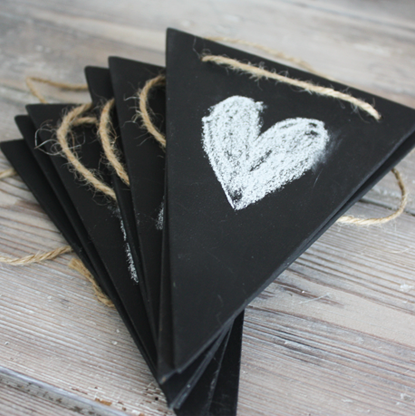Sunday, June 28, 2015
What if a year takes longer than 365 days?
When I started with my gap year towards the end of 2013 I borrowed a few definitions for GAP YEAR and YEAR.
A GAP YEAR: In the professional or career world, a gap year is a year before or after taking a new direction - or even during the same old direction, when a gap year is known as a sabbatical.
A YEAR is the orbital period of the Earth moving in its orbit around the Sun, almost precisely 365 days.
And therefore, like Lewis Carroll and any project manager would confirm, did ‘begin at the beginning, and go on till you come to the end: Then stop’.
But what if the end is not the end? What if a year takes longer than 365 days?
I learned that the Great Year, or equinoctial cycle, which corresponds to a complete revolution of the equinoxes around the ecliptic: Its length is about 25,700 years. And I learned about the Galactic year which is the time it takes Earth's solar system to revolve once around the galactic center: It comprises roughly 230 million Earth years.
Therefor, I'm consciously continuing my gap year and the documenting thereof, because like Wonderland's Oraculum, it illustrates and tells of adventures - happenings and thoughts - during the gap year of an quinquagenarian.
Friday, January 23, 2015
Beyond the pairs of opposites . . .
The unemployment rate in Denmark is 3.4 %, which is the lowest in Europe. The literacy rate is at least 99%. The Danish national norms for pupil-teacher ratios are, primary in Denmark are 9.93 for primary schools and 10.5 for secondary schools. As education is free and all students get very attractive government stipends, the average Dane is well educated, and have good job with one of the highest salaries in Europe.
The unemployment rate in South Africa is 25,2%, and the literacy rate is 7,1% -according to SA’s real level of literacy available at http://citizen.co.za/31407/literatez/). The South African national norms for pupil-teacher ratios are 40:1 for primary schools and 35:1 for secondary schools. As education is not free and the average student's don't get a bursary and the only financial assistance is from family members of which most are not literate themselves.

Our mind is capable of passing beyond the dividing line we have drawn for it. Beyond the pairs of opposites of which the world consists, other, new insights begin.
You should let yourself be carried away, like the clouds in the sky. You shouldn’t resist. God exists in your destiny just as much as he does in these mountains and in that lake. It is very difficult to understand this, because man is moving further and further away from Nature, and also from himself.
Hermann Hesse (1877 - 1962)
Swiss poet, novelist, and painter
Swiss poet, novelist, and painter
Saturday, January 3, 2015
Feastival (3)
Hanging bunting is a prime way to show involvement in a celebration. And I just love bunting, so, I glue-gunned off-white bunting in our entrance hall for our white Christmas Eve dinner.
My first real experience with bunting was with the Christmas card bunting of my primary school years.
Then I was in England with the Jubilee celebrations in 2012 and bought my daughter - whose name derives from Queen Mary and Queen Elizabeth - a string of Jubilee bunting at the Bolton market.
Then I bought my grandson Jonathan a string of Cars-bunting . . .
And I found myself a string of crochet doily bunting . . .
And the guest bedroom went hessian bunting . . .
And then Ina Steyn, my sister-in-love, gave me blackboard bunting . . .
Bunting was originally a specific type of lightweight worsted wool fabric manufactured seemingly from about 1594, certainly from 1605, and used for making ribbons and flags.
The origin of the word is uncertain. Today, "bunting" is a term for any festive decorations made of fabric, or of plastic, paper or even cardboard in imitation of fabric. Typical forms of bunting are strings of colourful triangular flags and lengths of fabric. The term bunting is also used to refer to a collection of flags.
My first real experience with bunting was with the Christmas card bunting of my primary school years.
Then I was in England with the Jubilee celebrations in 2012 and bought my daughter - whose name derives from Queen Mary and Queen Elizabeth - a string of Jubilee bunting at the Bolton market.
 |
| This 1953 image shows bunting for the Queen's Coronation celebration in Newcastle, England. |
Then I bought my grandson Jonathan a string of Cars-bunting . . .
And my Ozzie granddaughters Nina and Gweni took part in bunting fun . . .
And I found myself a string of crochet doily bunting . . .
And the guest bedroom went hessian bunting . . .
And then Ina Steyn, my sister-in-love, gave me blackboard bunting . . .
Bunting was originally a specific type of lightweight worsted wool fabric manufactured seemingly from about 1594, certainly from 1605, and used for making ribbons and flags.
The origin of the word is uncertain. Today, "bunting" is a term for any festive decorations made of fabric, or of plastic, paper or even cardboard in imitation of fabric. Typical forms of bunting are strings of colourful triangular flags and lengths of fabric. The term bunting is also used to refer to a collection of flags.
Subscribe to:
Comments (Atom)











